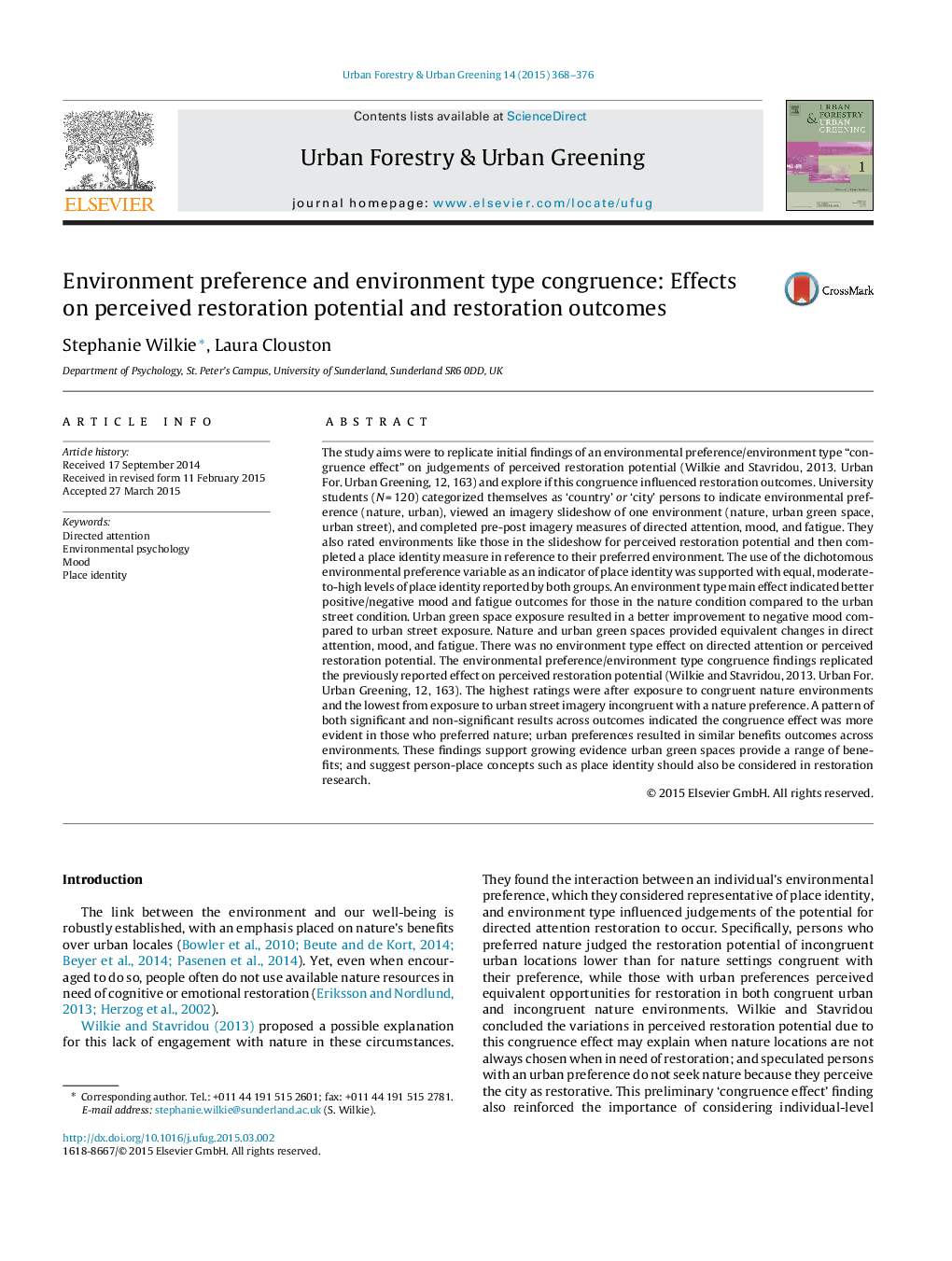| کد مقاله | کد نشریه | سال انتشار | مقاله انگلیسی | نسخه تمام متن |
|---|---|---|---|---|
| 10252148 | 160244 | 2015 | 9 صفحه PDF | دانلود رایگان |
عنوان انگلیسی مقاله ISI
Environment preference and environment type congruence: Effects on perceived restoration potential and restoration outcomes
ترجمه فارسی عنوان
ترجیح محیط زیست و سازگاری با محیط زیست: تأثیر بر پتانسیل ترمیم درک شده و نتایج بازسازی
دانلود مقاله + سفارش ترجمه
دانلود مقاله ISI انگلیسی
رایگان برای ایرانیان
کلمات کلیدی
توجه خاص، روانشناسی محیطی، حالت، هویت محل،
موضوعات مرتبط
علوم زیستی و بیوفناوری
علوم کشاورزی و بیولوژیک
جنگلداری
چکیده انگلیسی
The study aims were to replicate initial findings of an environmental preference/environment type “congruence effect” on judgements of perceived restoration potential (Wilkie and Stavridou, 2013. Urban For. Urban Greening, 12, 163) and explore if this congruence influenced restoration outcomes. University students (NÂ =Â 120) categorized themselves as 'country' or 'city' persons to indicate environmental preference (nature, urban), viewed an imagery slideshow of one environment (nature, urban green space, urban street), and completed pre-post imagery measures of directed attention, mood, and fatigue. They also rated environments like those in the slideshow for perceived restoration potential and then completed a place identity measure in reference to their preferred environment. The use of the dichotomous environmental preference variable as an indicator of place identity was supported with equal, moderate-to-high levels of place identity reported by both groups. An environment type main effect indicated better positive/negative mood and fatigue outcomes for those in the nature condition compared to the urban street condition. Urban green space exposure resulted in a better improvement to negative mood compared to urban street exposure. Nature and urban green spaces provided equivalent changes in direct attention, mood, and fatigue. There was no environment type effect on directed attention or perceived restoration potential. The environmental preference/environment type congruence findings replicated the previously reported effect on perceived restoration potential (Wilkie and Stavridou, 2013. Urban For. Urban Greening, 12, 163). The highest ratings were after exposure to congruent nature environments and the lowest from exposure to urban street imagery incongruent with a nature preference. A pattern of both significant and non-significant results across outcomes indicated the congruence effect was more evident in those who preferred nature; urban preferences resulted in similar benefits outcomes across environments. These findings support growing evidence urban green spaces provide a range of benefits; and suggest person-place concepts such as place identity should also be considered in restoration research.
ناشر
Database: Elsevier - ScienceDirect (ساینس دایرکت)
Journal: Urban Forestry & Urban Greening - Volume 14, Issue 2, 2015, Pages 368-376
Journal: Urban Forestry & Urban Greening - Volume 14, Issue 2, 2015, Pages 368-376
نویسندگان
Stephanie Wilkie, Laura Clouston,
